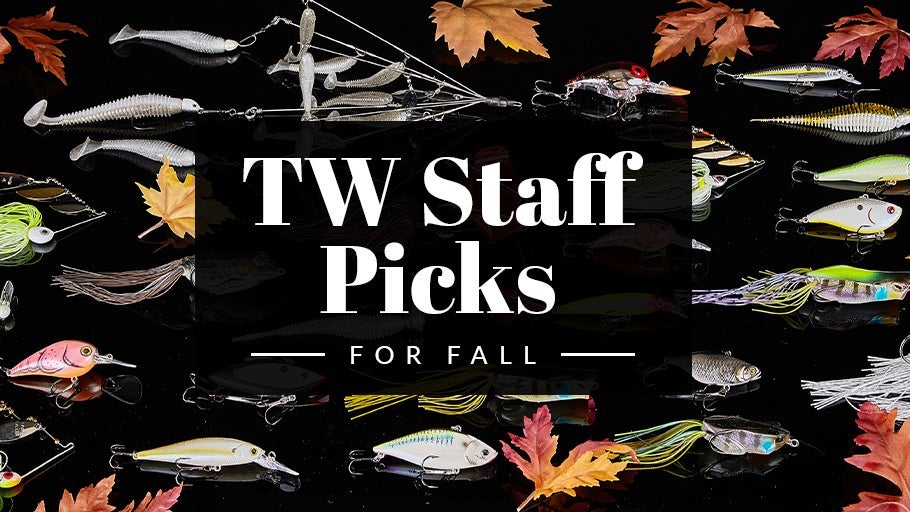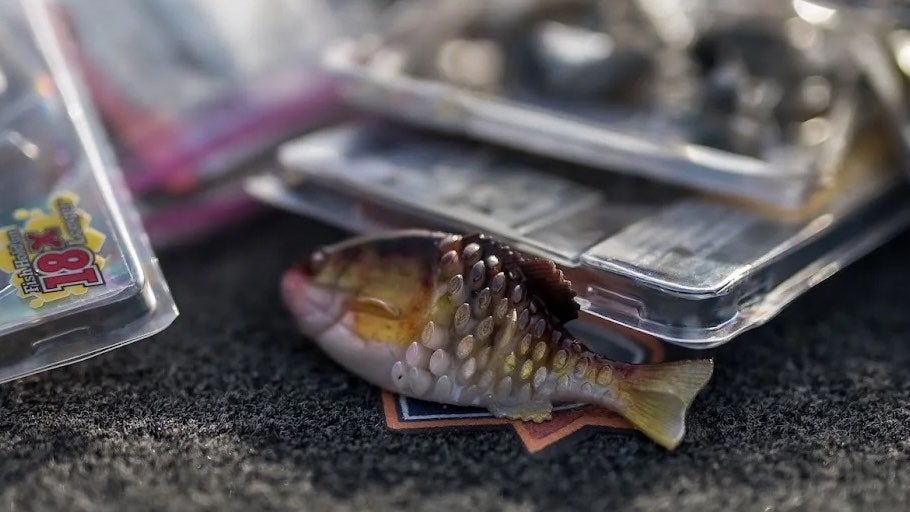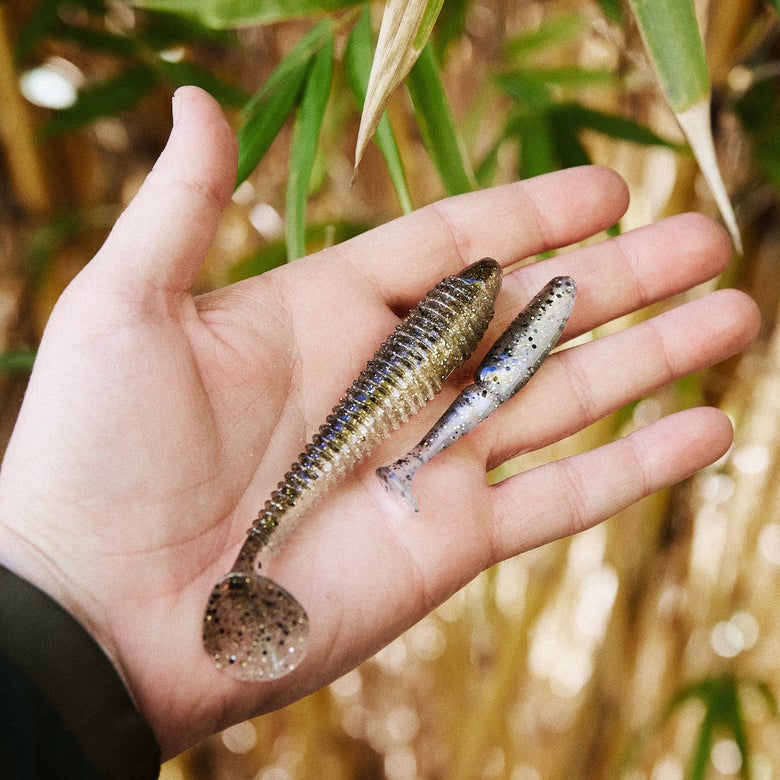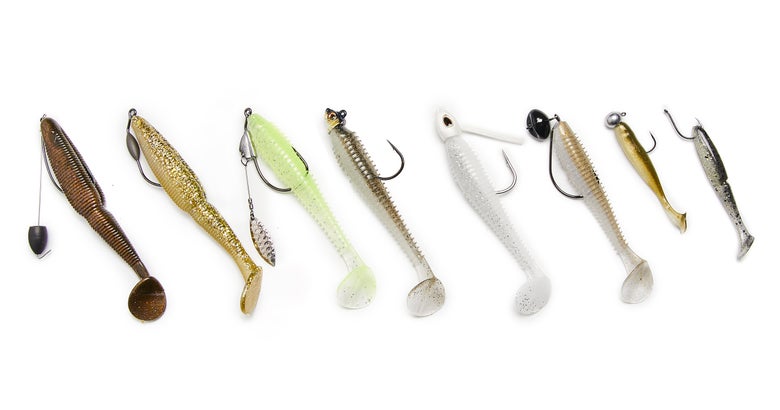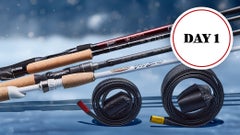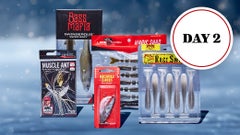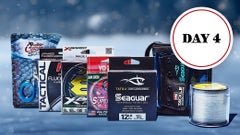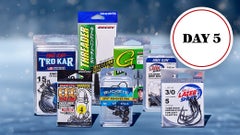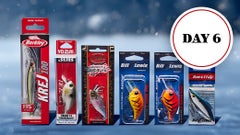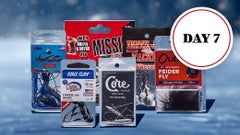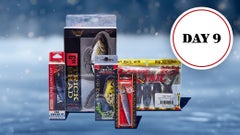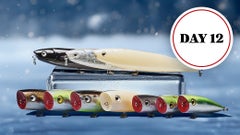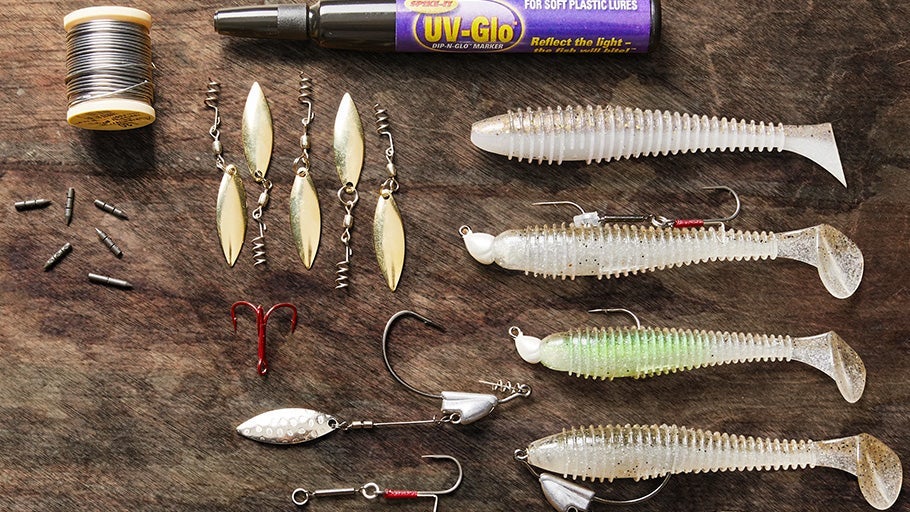
Paddle Tail Swimbaits Gear Guide
An all-season imitator of baitfish big and small, there's no wrong time of year to throw a soft swimbait. For the purpose of this article, we're focusing on small paddle tails (2 to 3 in), also referred to as finesse paddle tails, and medium-size (4 to 5 in) paddle tail swimbaits, as these sizes don't require specialized gear, catch all species of bass, and consistently produce bites. By categorizing paddle tails into finesse and mid-size swimbaits, our goal is to provide a gear recommendation and take a closer look at how your rigging methods or approach may vary based on the season and what size you choose to throw.
Finesse Paddle Tail Swimbaits
Great for mimicking all kinds of small forage that bass simply love to feed on, these smaller bite-size swimbaits flat out get bit all throughout the country. And even better, they can be thrown with virtually any spinning rod, which makes them highly versatile. Anytime the fish appear to be keyed in on smaller baitfish, a finesse paddle tail is a great option, offering anglers endless light-line rigging options, including swimbait heads, ball heads, small extra-wide gap hooks, or even on a drop shot.
Finesse Paddle Tail Spinning Rods
As many smallmouth and spotted bass anglers know, the spinning rod is the tool of choice when you are throwing lightweight tackle and finesse-sized paddle tail swimbaits (2"–3"). A slightly longer 7'3"–7'6" medium-power, fast-tapered spinning rod would be ideal, as it allows the rod tip to load up quickly for positive hooksets. The added rod length also works to extend casting distance, which is critical for reaching schooling fish and the backs of coves and pockets.
Finesse Paddle Tail Spinning Reels
Spinning reel sizing mostly comes down to angler preference, but considering this is a light-line finesse tactic, often smaller and more lightweight tackle is preferred. Any 1000–3000 size spinning reel can be used here based on preference; just try to balance your line capacity with a reel size that you feel comfortable using to make repeated casts.
Finesse Paddle Tail Line
Many anglers would agree that braided mainline to fluorocarbon leader provides the best combination of strength, sensitivity, and invisibility for all spinning rod applications. Try using a braided mainline in the 8- to 15-lb range accompanied by a 6- to 10-lb fluorocarbon leader. In certain situations, like when you're targeting suspended fish, a straight fluorocarbon setup provides a faster rate of fall that helps small baits reach their targeted depth a little quicker. Any fluorocarbon in the 6- to 10-lb range should suffice for such scenarios.
Mid-Size Paddle Tail Swimbaits
Anytime you have threadfin shad, baitfish, or any kind of medium-sized forage in your waters, upsizing your paddle tail to a 'standard' or mid-size swimbait in the 4" to 5" range not only matches the hatch but also opens the door for bigger bites. While still considered modest in comparison to larger swimbaits, mid-size paddle tails often require heavier gear than their bite-sized finesse counterpart, so many anglers prefer to throw them using the added leverage of a casting rod.
Mid-Size Paddle Tail Casting Rods
Selecting the right casting rod for paddle tail fishing will depend on the size of your swimbait and how heavy of a jig head you intend on using. Anything from a shorter medium-action casting rod all the way up to a flipping stick could pair nicely depending on your tackle. Generally speaking, if you were using a 5" paddle tail with a 3/8-oz jig head, any medium-heavy rod in the 7'3" to 7'6" range with a moderate-fast bend would provide the right blend of power and length to get the job done.
Mid-Size Paddle Tail Casting Reels
A casting reel with a 7:1 gear ratio allows you to speed up or slow down your retrieve when needed, but if you tend to fish a little fast, a 6:1 gear ratio is a great choice when you need to force yourself to slow down. Line capacity is crucial for making long casts and fishing deeper water, so look for a casting reel in the 150–200 size when using mid-size paddle tails to allow you to make a long cast and fish it deeper when needed.
Mid-Size Paddle Tail Line
Most anglers prefer the translucent properties of fluorocarbon line in the 8- to 20-lb range, with 12 lb being the sweet spot for a 'standard' size paddle tail in most situations. Step up your line size if you are fishing larger paddle tail swimbaits or navigating abrasive cover. When you are primarily fishing open water or fishing smaller baits, go ahead and step down your line size.
Rigging Methods
Generally, paddle tail swimbaits can be rigged on swimbait jig heads of varying styles when fishing open water or near rocky bottoms. A more natural head may be necessary if you're targeting suspending fish or fishing open water. A ball head works great if you're reeling your swimbait over rocks since it tends to hang up less. And a swimbait head with a weedguard reduces snags when dealing with complex cover. Finesse paddle tail swimbaits offer even more options by providing the versatility to be nose-rigged on a drop shot.
When fishing areas with brush, grass, or heavy vegetation, weedless belly weighted hooks are often a great choice, as they come through wood, grass, and all kinds of cover with ease. Weighted swimbait hooks are also commonly offered with a spinner blade attached to the belly to add an extra element of flash and vibration to your presentation. If you are marking schools of fish holding in deeper water, consider alternate rigging methods like using your jig rod and rigging a paddle tail on the back of a Tokyo rig or wobble head. Paddle tail swimbaits also make great trailers and pair well with bladed jigs, spinnerbaits, and swim jigs.
Tips & Tricks
Typically, the key to getting bites involves focusing on reeling the lure close to the bottom, so you'll want to have some bottom contact during your retrieve to ensure the lure is staying within the strike zone. Experiment with running a chartreuse marker down the lateral line of your swimbait or using an orange marker to add a touch of color to the chin of your bait; sometimes these kinds of adjustments can make all the difference. To better secure your paddle tail to your swimbait head, add a little glue to the nose of your swimbait and the inside of the jig head. During the colder months, consider using a stinger hook to improve your hook-up ratio, especially when bites are coming few and far between. Put simply, a stinger hook is an additional single or treble hook that extends toward the back of your paddle tail to reduce short strikes from non-committal fish.
Colors
Shad and natural baitfish patterns are the staple colors for paddle tail swimbaits and get bites pretty much anywhere, but you also want to account for the season and primary forage in the waters you are fishing when selecting a color. When bluegills and sunfish move shallow to spawn during the spring months, colors that mimic these fish may be the most productive. If you reside in the Midwest where yellow perch are often the primary forage for smallmouth, consider using a paddle tail swimbait that resembles a perch. Translucent colors with flake will excel when the sun is high or the water is gin clear, but when fishing low-light conditions or heavily stained water, solid colors like black, white, or chartreuse tend to create a better profile for the fish to zero in on.
The paddle tail swimbait is a versatile search bait that provides the angler with an effective tool for covering water and locating fish. With endless color options, rigging methods, and retrieval styles to perfectly match your water's forage and fish's temperament, every angler's arsenal should include a few basic rigging options for throwing a soft swimbait.
Related Articles

